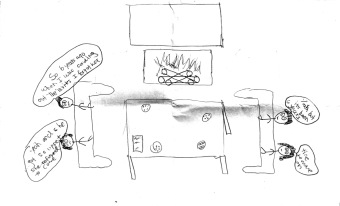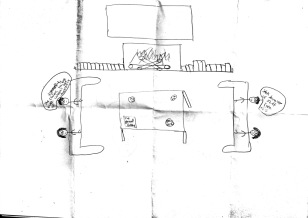An Updated Literacy Narrative of my Life
Re-visualizing my literacy narrative has been a truly eye opening process for me. My original literacy narrative and this updated version, The Story Behind the Pan and Paper, depict very different aspects of my journey with reading and writing. While creating these drafts, it became clear to me that the story I wished to share with the world had changed immensely. In this new version I decided to dive head first into the true driving forces behind my literacy journey instead of the surface level story in my original. Thus, I was forced to expand my analytical thinking and break down the experiences and memories that eventually drove me to my love for reading and writing. Doing this allowed for a deeper writing process that was, at times nerve-wracking, but ultimately liberating as I was able to share my story and release some of the trauma that I’ve faced in my life.
After working with a visual medium in creating the comic version, this story seemed to fully come alive in my mind. It was difficult to draw each image and relive the memories that I was depicting, but it gave me the opportunity to look back at these experiences and what I really felt in those moments. Creating the comic provided me with a deeper understanding of my real story and all the emotions that came with it.
The literacy narrative assignment as a whole has truly challenged me to become a better writer and to look back at some of the most traumatic moments of my life. As for the learning outcomes for this course, I believe completing this project as helped me meet many of them. Writing as a process has been one outcome that I have really come to understand because of this project. My first draft was not my best work, but it allowed me to reflect and think deeper in order to complete my comic and final narrative. Along with this, the comic portion of this assignment forced me to imagine my story visually and compose it in a medium that had been all new to me. Ultimately, the literacy narrative project provided me with great progression as a writer. It has taught me many things about myself and showed me the potential I have for the future. I feel very proud of the work that I have completed and will use what I have learned from this assignment for all of my writing to come.













